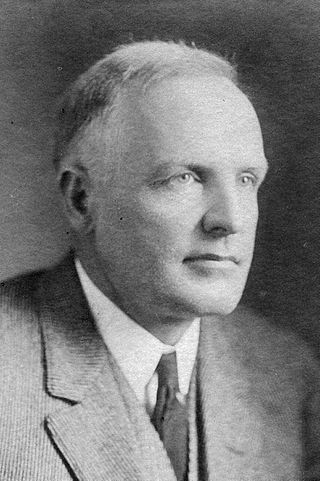
Pike County is a county located in the U.S. state of Arkansas. As of the 2020 census, the population was 10,171. The county seat is Murfreesboro. Pike County is Arkansas's 25th county, formed on November 1, 1833, and named for Lieutenant Zebulon Pike, the explorer for whom Pikes Peak is named. It is an alcohol prohibition or dry county.

Whelen Springs is a town in Clark County, Arkansas, United States. The population was 92 at the 2010 census. From 1930 through 1939 the town thrived, being a main hub of operations for the then powerful Ozan Lumber Company.

Prescott is a city and the county seat of Nevada County, Arkansas, United States. The community had a population of 3,296 at the 2010 census. Prescott is part of the Hope Micropolitan Statistical Area.

Delight is a town in Pike County, Arkansas, United States. The population was 279 at the 2010 census.
PotlatchDeltic Corporation is an American diversified forest products company based in Spokane, Washington.

Louisiana-Pacific Corporation, commonly known as "LP", is an American building materials manufacturer. The Company was founded in 1973 and is currently based in Nashville, Tennessee. LP pioneered the U.S. production of oriented strand board (OSB) panels. Today, LP is the world's largest producer of OSB, and manufactures engineered wood building products. LP products are sold to builders and homeowners through building materials distributors and dealers and retail home centers.

The Warren and Saline River Railroad is an 8-mile (13 km) short-line railroad connecting Cloquet, Arkansas to the Arkansas Midland Railroad at Warren. It has always been independent of larger carriers, and was previously owned by the Potlatch Corporation, a lumber company, until January 2010. WSR is currently operated by the Arkansas Midland Railroad and was sold by Pinsly Railroad Company to sold to Genesee & Wyoming Industries in 2014.

The Prescott and Northwestern Railroad is a short-line railroad headquartered in Prescott, Arkansas. It is operated by Arkansas Midland Railroad, which is owned by Genesee & Wyoming.
Graysonia was once a boomtown in Clark County, Arkansas, United States, but has since become a ghost town. It is located on a dirt road in what is now known locally as "the middle of nowhere", halfway between Arkadelphia and Alpine. There are no populated communities in its vicinity and only a few scattered residences within a few miles of the former town's location. In the early 20th century, Graysonia was a main hub for the local timber industry. It had a population of actual residents estimated at better than 1,000.
The Great Southern Lumber Company was chartered in 1902 to harvest and market the virgin longleaf pine forests in southeastern Louisiana and southwestern Mississippi. Bogalusa, Louisiana was developed from the ground up as a company town and was the location for Great Southern Lumber Company's sawmill, which began operation in 1908. Other company interests included a railroad and paper mill. The company ceased operation in 1938, when the supply of virgin pines was depleted. Bogalusa became the site of a paper mill and chemical operations, followed by other industry.
Mauldin or Mauldin Logging Camp is a ghost town in Montgomery County, Arkansas, United States. Established in 1918 by Billy Mauldin in cooperation with Thomas Rosborough, it became heavily populated by 1922 by workers drawn to industries cutting and processing virgin timber in the area. It was located between Mount Ida and Pencil Bluff.
The East Waterford Lumber Company was an early 20th-century company which leased and harvested timberland in Juniata and Perry County, Pennsylvania.
The Finkbine-Guild Lumber Company was established to harvest and market the virgin longleaf pine stands of southern Mississippi during the early 20th century. The main sawmills were located in Wiggins and D'Lo, Mississippi. When the local timber supply dwindled, the company tried to utilize redwood trees from California, but that operation failed because of high transportation costs. Other attempts were made at promoting a more diversified use of the cutover timberlands; some ventures were successful while others were not.

Western Forest Products Inc. is a Canadian lumber company based in Vancouver, British Columbia, Canada.
The Detroit and Charlevoix Railroad is a defunct railroad that was located in Northern Lower Michigan. It was created to haul finished lumber from timber lands to market. It was acquired by the Michigan Central Railroad.
Fernwood Lumber Company had its beginning in the 1870s when John Fletcher Enochs and his son, Isaac Columbus Enochs, started a lumber business near Crystal Springs in Copiah County, Mississippi. Between 1880 and 1920, Fernwood Lumber Company became one of the largest lumber operations in south Mississippi with investments in timberland, lumber mills, and railroads.
L.N. Dantzler Lumber Company began as a small sawmill owned by William Griffin in Moss Point, Mississippi. L.N. Danzler bought it in the 1870s and, with two sons, incorporated the business in 1888. Originally, the main business was the manufacture of lumber from southern yellow pine, but in 1949, the company switched to tree farming of southern pines and sold timber by selective cutting to yield a variety of wood products. The family-owned business prospered for 75 years but was sold to International Paper Company in 1966.

Richard H. Keith, also known as R. H. Smith, was a coal and lumber businessman. He arrived in Kansas City, Missouri in 1871 with forty dollars and started a small coal yard. From that beginning evolved an empire spanning several states, that included coal, timber, sawmills, railroads, and even the building of towns.

Horace Erastus Bemis was a college football player and lumber dealer. Bemis was a prominent halfback for the Vanderbilt Commodores football team. On the inaugural 1890 team, he provided most of the offense.

The Missouri Lumber and Mining Company (MLM) was a large timber corporation with headquarters and primary operations in southeast Missouri. The company was formed by Pennsylvania lumbermen who were eager to exploit the untapped timber resources of the Missouri Ozarks to supply lumber, primarily used in construction, to meet the demand of U.S. westward expansion. Its primary operations were centered in Grandin, a company town it built starting c. 1888. The lumber mill there grew to be the largest in the country at the turn of the century and Grandin's population peaked around 2,500 to 3,000. As the timber resources were exhausted, the company had to abandon Grandin around 1910. It continued timber harvesting in other parts of Missouri for another decade. While some of the buildings in Grandin were relocated, many of the remaining buildings were listed on the National Register of Historic Places in 1980 as part of the state's historic preservation plan which considered the MLM a significant technological and economic contributor to Missouri.










